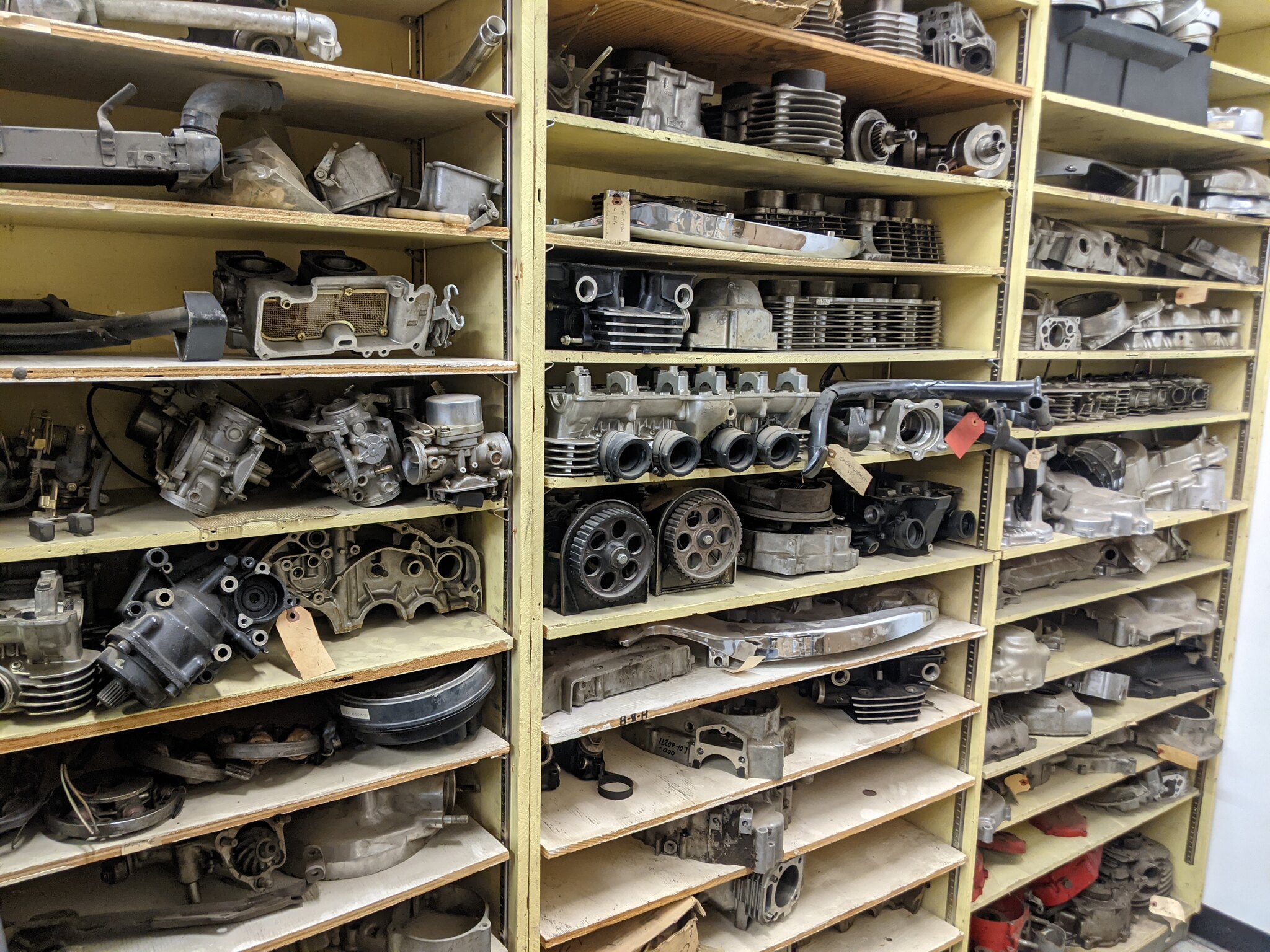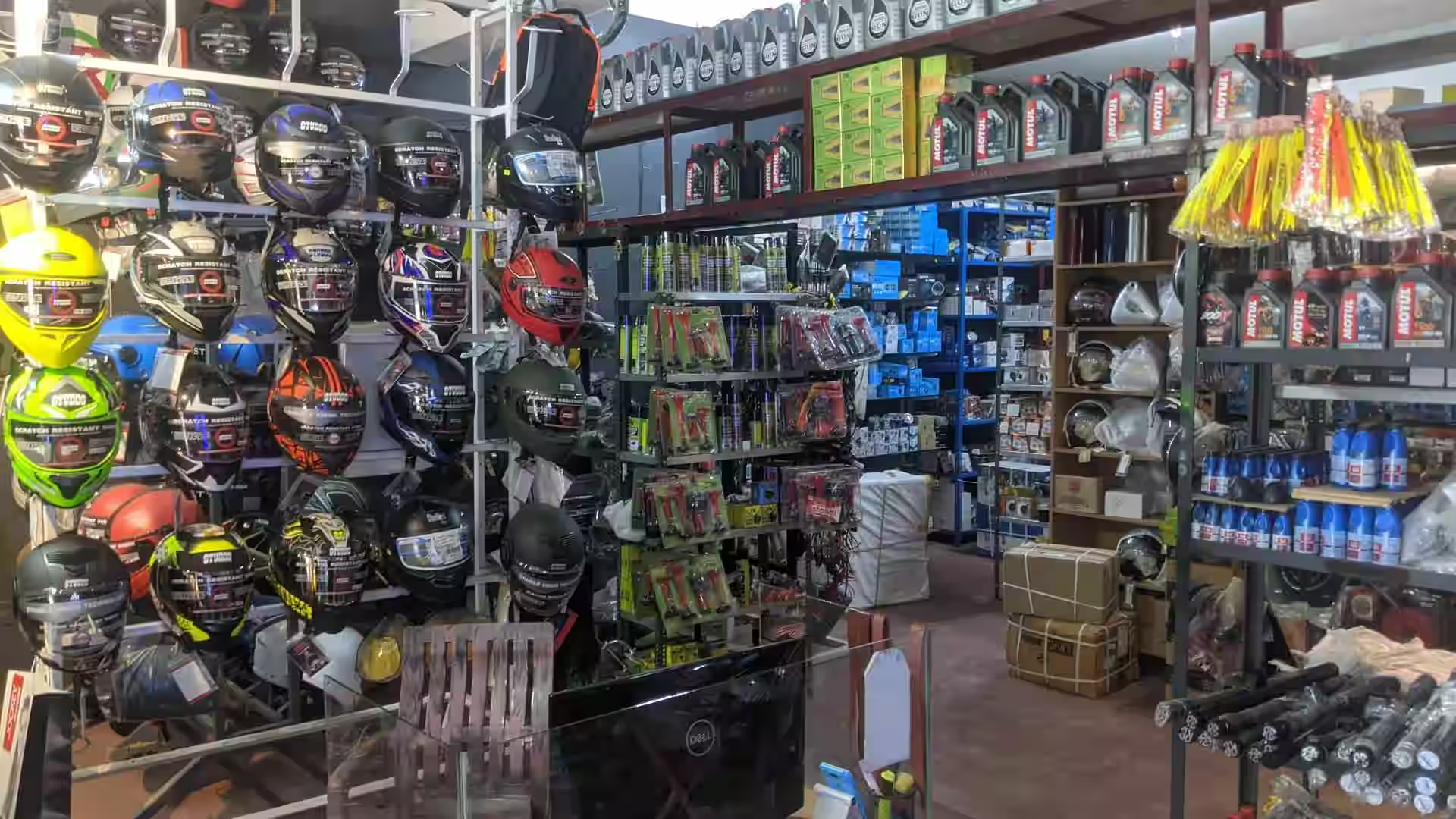Visit Our Motorcycle Shop for Specialist Guidance and Top Quality Products
Visit Our Motorcycle Shop for Specialist Guidance and Top Quality Products
Blog Article
Comprehending the Important Parts of a Motorbike: A Comprehensive Overview for Lovers
For motorcycle fanatics looking to boost their riding experience and guarantee their bikes run smoothly, comprehending the necessary elements of a bike is vital. Each element, from the engine's detailed functions to the critical duty of the stopping systems, not just affects performance but also security and convenience.
Engine Components

The camshaft plays an important function in controlling the timing of the engine's shutoffs, ensuring the specific opening and closing necessary for reliable gas and air intake, as well as exhaust expulsion. This timing is important to preserving optimum engine efficiency and effectiveness. Furthermore, the carburetor or fuel shot system, depending on the motorcycle model, is responsible for blending air with gas in the right proportion for burning.
The cooling system, either air or liquid-based, functions to keep the engine's temperature level within operational limits, protecting against overheating and making certain long life - motorbike shop. Each component, thoroughly made and integrated, contributes to the seamless procedure of the engine, defining the bike's power result and total performance
Transmission System
Important to the bike's performance, the transmission system makes sure reliable power transfer from the engine to the wheels. This system comprises a number of vital elements, including the clutch, transmission, and final drive, each playing a crucial role in equating the engine's power into motion. The clutch, typically operated by a hand lever, offers to engage and disengage the engine from the transmission, permitting smooth gear modifications and regulated velocity.
The transmission, often referred to as the transmission proper, consists of a collection of gears that bikers can by hand shift via to readjust the bike's rate and torque outcome. These equipments are set up in a series that allows the motorbike to increase smoothly and preserve optimum engine efficiency across numerous speeds. The majority of motorcycles make use of a consecutive gearbox, calling for the cyclist to shift gears in a predetermined order.
Braking Mechanisms
While recognizing the transmission system is essential to taking advantage of a bike's power, equally crucial is the ability to regulate and quit that power successfully, which is where braking devices enter into play. Brakes are critical for safety and performance, supplying the cyclist with the needed control to browse various surfaces and conditions. Normally, motorcycles include two kinds of stopping systems: disc brakes and drum brakes.
Disc brakes are a lot more common in modern motorbikes due to their exceptional efficiency. This system supplies better warmth dissipation, consistent performance, and improved quiting power, particularly in damp conditions.
Alternatively, drum brakes, though much less common, are still discovered in some bikes. They work by pushing brake shoes versus the internal surface area of a drum connected to the wheel. While generally less efficient in warmth dissipation and quiting power, drum brakes are easier and extra cost-efficient.
Understanding these braking systems' subtleties permits motorcyclists to preserve their motorcycles appropriately and appreciate the design that guarantees safe and reliable quiting.
Suspension and Guiding
Suspension and guiding systems are important elements that substantially affect a motorbike's handling and ride convenience. The suspension system, being composed of forks at the front and shock absorbers at the rear, absorbs road irregularities, improving stability and control. Front forks, typically telescopic or upside down, compress and rebound to alleviate effects, while rear shock absorbers preserve tire call with the roadway, vital for grip and safety.
Steering, centered around the handlebars, links the cyclist to the bike's directional control. The guiding head bearings ensure smooth operation, permitting accurate maneuverability. Proper alignment and click to read upkeep of these bearings are vital for predictable guiding feedback and lowering rider fatigue.
The suspension's adjustability is one more crucial aspect; preload, damping, and rebound settings enable customization to match numerous riding designs and conditions. This flexibility is necessary for optimizing performance, whether navigating metropolitan streets or taking on tough tracks. Technologies like digital suspension systems here are the findings provide real-time adjustments, enhancing experience top quality across diverse terrains.

Electric Solutions
After making certain a regulated and smooth experience via effective suspension and steering systems, interest turns to the electric systems, a critical element of contemporary motorcycles. These systems play a crucial duty not only in starting the engine but likewise in powering different elements that boost the performance and security of the motorcycle.
At the heart of a bike's electric system is the battery, which stores electric energy needed for beginning the engine and powering complementary systems - motorcycle shop. The alternator or generator, combined with the rectifier-regulator, ensures the battery stays charged while the motorbike functions, transforming mechanical power into electrical energy and keeping voltage degrees
The ignition system, one more critical component, is accountable for sparking the air-fuel mix in the engine's basics cylinders. Modern motorcycles commonly use a digital ignition system, providing greater efficiency and reliability contrasted to standard systems.
Lights systems, consisting of headlights, tail lights, and signs, are likewise essential, making sure presence and security for the rider. Extra digital parts such as sensors, control units, and displays add to innovative functions like gas shot management, anti-lock stopping systems (ABDOMINAL), and electronic control panels, better improving the riding experience.
Verdict
A detailed understanding of a motorcycle's important parts, including the engine, transmission system, stopping devices, suspension, guiding, and electric systems, is vital for enthusiasts intending to optimize performance, security, and convenience. Proficiency of these aspects enables notified choices regarding maintenance and upgrades, eventually boosting the riding experience. By incorporating this understanding, motorcyclists can ensure their bikes operate at peak efficiency and dependability, thereby maximizing both pleasure and longevity of their vehicles.
For bike lovers looking to elevate their riding experience and guarantee their bikes run efficiently, recognizing the vital parts of a motorbike is extremely important.Indispensable to the bike's performance, the transmission system ensures reliable power transfer from the engine to the wheels.While recognizing the transmission system is vital to harnessing a motorcycle's power, just as essential is the capacity to control and quit that power effectively, which is where braking devices come into play. Commonly, motorbikes include two kinds of stopping systems: disc brakes and drum brakes.
A comprehensive comprehension of a motorcycle's important elements, consisting of the engine, transmission system, stopping systems, suspension, steering, and electric systems, is indispensable for fanatics intending to optimize safety, efficiency, and convenience.
Report this page